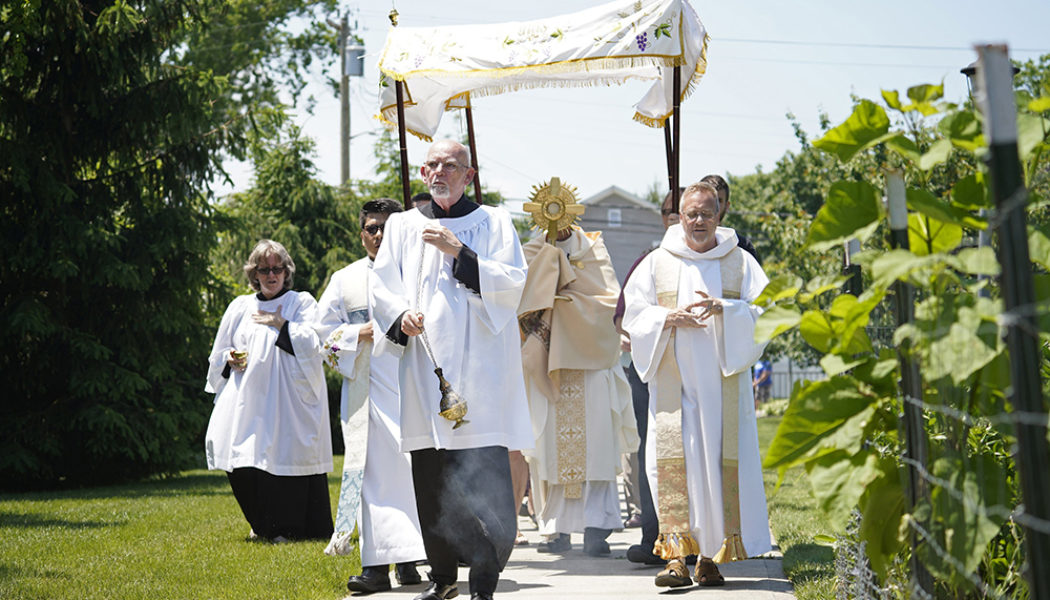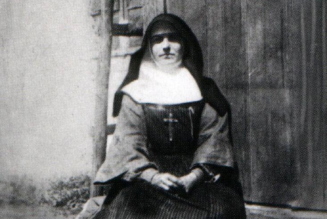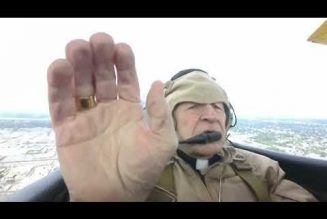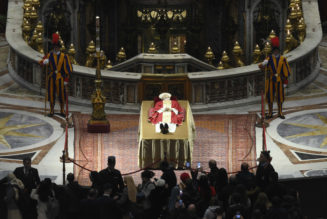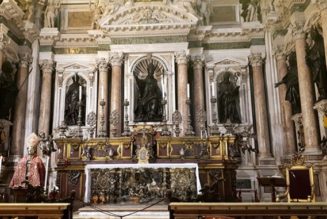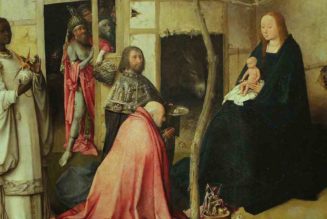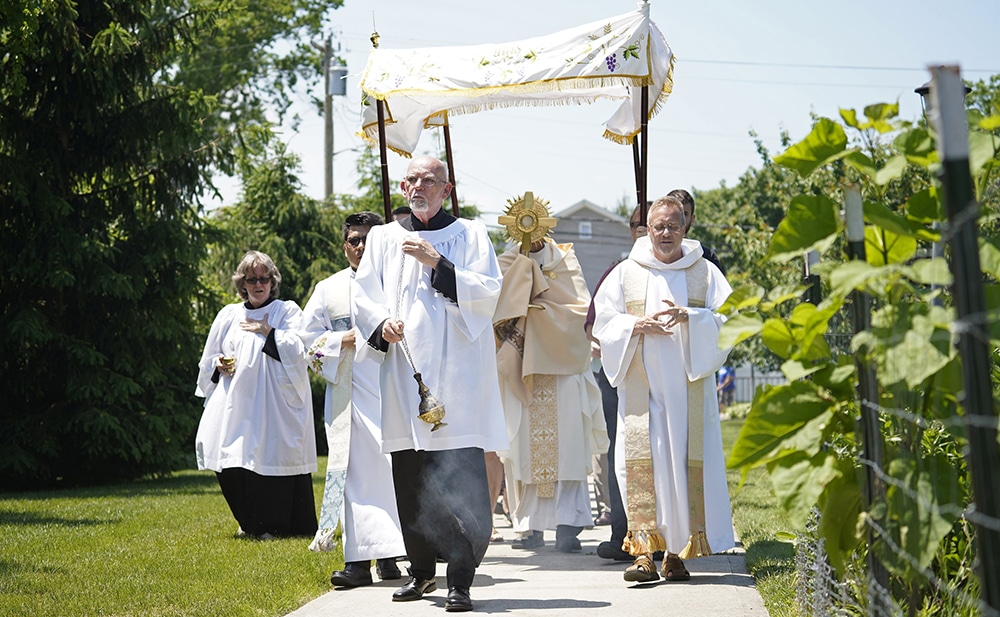
Adult altar server Rich Steimle swings a censer as he leads a eucharistic procession marking the feast of the Most Holy Body and Blood of Christ in 2021, at St. Joseph Church in Kings Park, N.Y. (CNS photo/Gregory A. Shemitz)
The very purpose of a monstrance is to show the Eucharist, “the living bread that came down from heaven” (Jn 6:51). The word monstrance comes from the Latin monstrare, which means “to make known” or “to reveal.” In the middle ages, monstrances were often shaped like little churches, making the connection between the worship that took place in the sacred place and the holiness of the Eucharist itself. Then, in one of the Church’s most beautiful examples of inculturation, Spanish missionaries began to shape monstrances like the sun in order to make the association between native peoples’ reverence for the sun and the Eucharist.
Some might hesitate to take the Eucharist to the streets in a monstrance. In an act of incredible fortitude, one of my Dominican confreres began leading a Corpus Christi procession at his parish — during June — in New York’s Greenwich Village neighborhood. While many expected the procession to be a source of controversy, tension or antagonism, none of that was the case.
Astonishing encounters followed. Onlookers marveled at the procession. Some asked questions of participants. Others quietly crossed themselves in prayer as the procession passed by their restaurant table. For those who asked questions, how could they know to ask a question if there was nothing to be seen to inspire their curiosity? For those who crossed themselves, how would they know to offer a gesture of faith if they could not see the Eucharist?
A Eucharistic procession is never a display of triumphalism or showmanship. Processions aren’t parades. When the faithful demonstrate reverence and prayer, processions are moments of authentic engagement with the world. When passersby happen upon moving examples of worship, their hearts can be moved to seek God.
Pope Francis says that Eucharistic processions are important because they remind us “that we are called to go out and bring Jesus to others.” The Holy Father offered a marvelous witness of the openness a Eucharistic procession offers at the beginning of his papacy, humbling walking behind the Blessed Sacrament in Rome’s Corpus Christi procession, instead of kneeling on a popemobile as his immediate predecessors had done.
A monstrance, which reveals Christ, puts Christ at the center of our journey. Hiding the Lord, or enclosing him, makes it easy to miss that he is the one being followed. That’s what’s so beautiful about Pope Francis’ witness: He’s pointing to Christ. The monstrance is not a treasure because of the precious metal from which it’s made or the gems and designs which adorn it. A monstrance is sacred because of the one it carries.
We are, by our baptism, pilgrims. Our destination is not the here and now. A monstrance declares for all to see our faith in the one whom we follow; it allows the one we love to be seen. A Eucharistic procession, then, importantly is a sign of the very deepest meaning of Christian life: We are led by Christ. We are guided by him from the false hopes and happinesses of this life to our eternal destiny in heaven.
The Gospels are filled with stories of people trying to get near to Jesus. Why would we not allow the Zaccheuses of today a glimpse of him? Why would we not carry him to the eyes of those who might very well be healed were they even to glance at him who sees the very depths of their souls?
Not all will believe in what they see. Not all believed when they saw the risen flesh of Christ. But some will believe. Some will be transformed. Some will be encouraged. Some will be renewed. And for them, that they might catch sight of the one we love, a procession with a monstrance will be the cause of unspeakable joy.
Father Patrick Briscoe, OP, is editor of Our Sunday Visitor. Follow him on Twitter @PatrickMaryOP.
